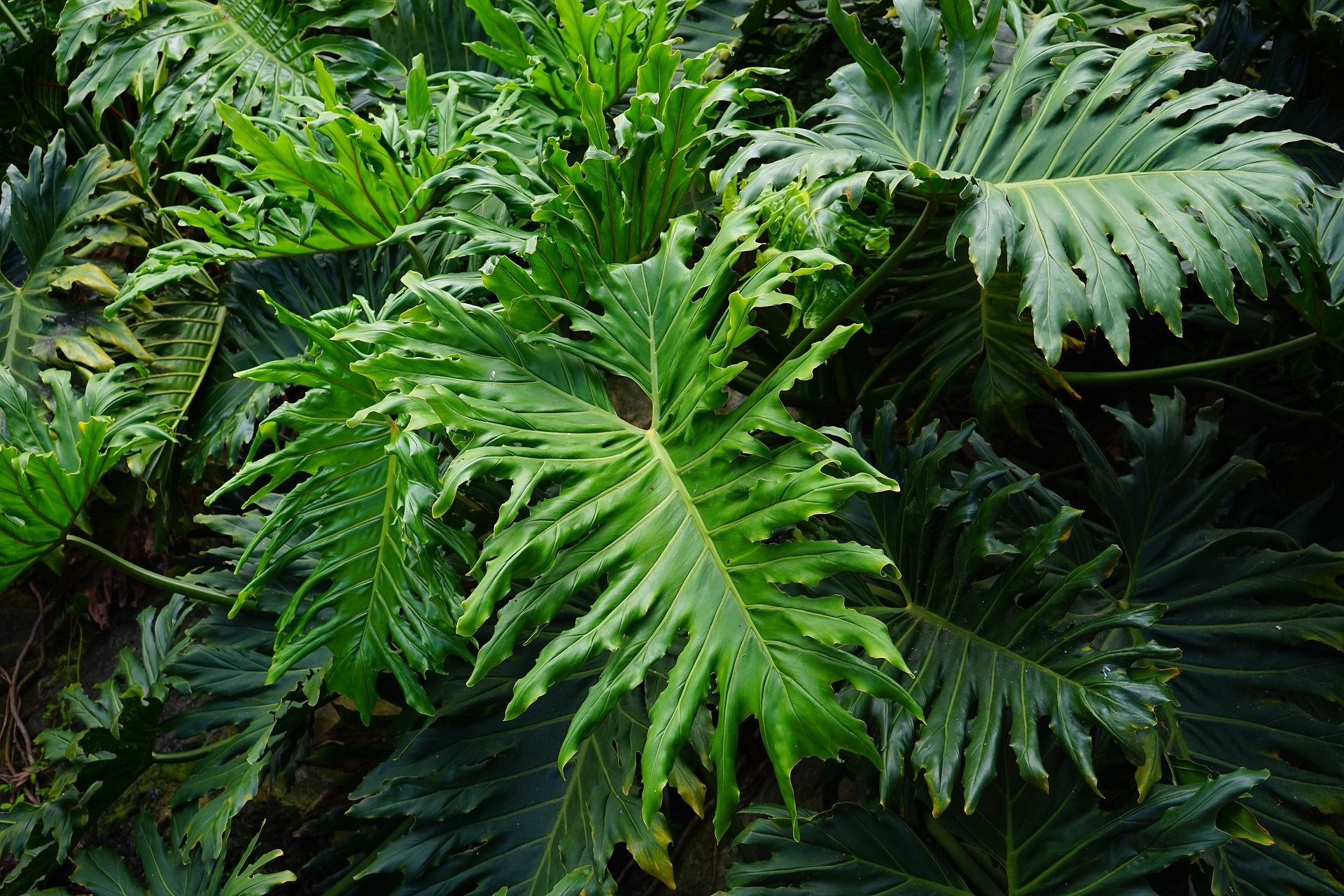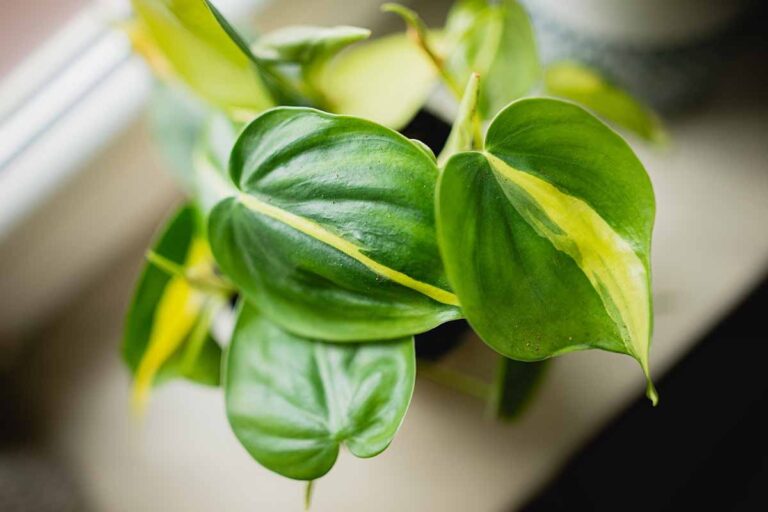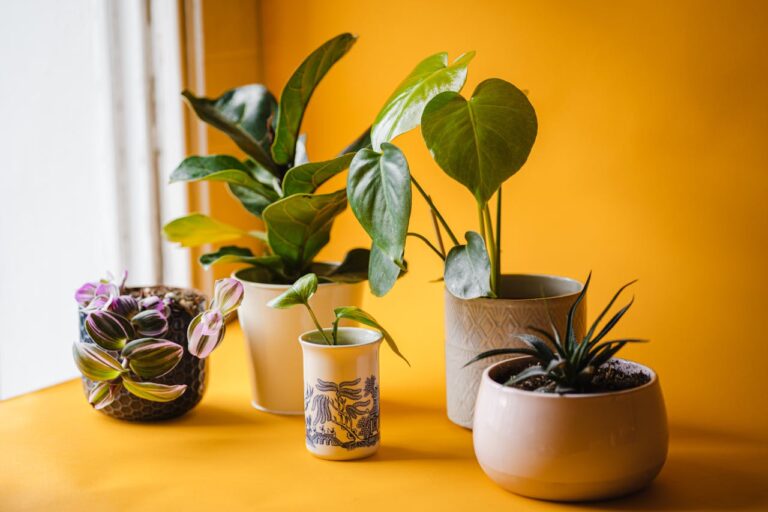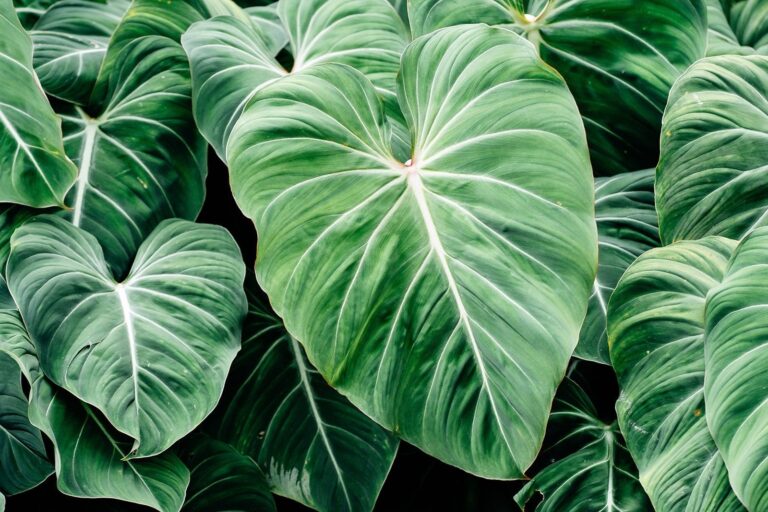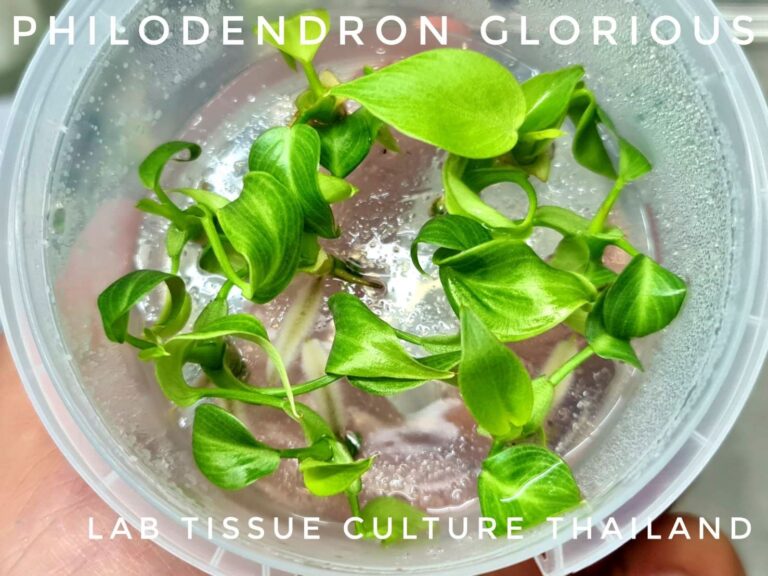Philodendron Temperature & Humidity: Complete Optimal Ranges Guide
Imagine if just one slight adjustment in your temperature could let your philodendron grow 300% faster. Because they don’t have the precise environmental formula these tropical natives crave, most houseplant enthusiasts battle yellowing leaves, stunted growth, and even obscure brown spots. The distinction of a surviving philodendron compared to a spectacular specimen has nothing to do with expensive fertilizers and fancy pots, but the precision of the temperature and humidity ranges that lead to explosive growth.
Philodendrons Climate Needs Based on Science
Philodendrons developed in the undergrowth of tropical rainforest habitats located in Central and South America, where temperatures hover between 75-85°F year-round and humidity rarely drops below 60%. These species of plants adapted special cellular strategies that allow them to flourish only in a very limited environment. When conditions deviate even a few degrees, cellular processes slow down, nutrient uptake goes to waste, and growth hormones lie dormant.
This biological base explains why no-nonsense “warm and humid” advice works. Your heartleaf philodendron is not simply predisposed to like certain environments, but biologically conditioned to respond to specific temperature and humidity signals that trigger optimal photosynthesis rates, effective transpiration and strong aerial root growth.
Optimal Temperature Range: The 65-85°F Sweet Spot
Studies are generally indicative that philodendrons reach the optimal growth rates when temperatures during the day are in the range of 75-85°F while nighttime temperatures are between 65-75°F, a 10° daily temperature difference closely resembles the rainforest and as for photosynthesis, it takes place on warm days, slightly colder nights serve as respite cell recovery and nutrient digestion.
The absolute minimum tolerated temperature is different among species. Heartleaf philodendrons (Philodendron hederaceum) can withstand temperatures as low as 55°F for short durations, while sensitive species like Pink Princess experience stress under 60°F. Tree philodendrons (Thaumatophyllum bipinnatifidum) enjoy excellent cold tolerance and can survive temperatures down to 28°F once mature, even so it stops growth altogether below 50°F.
Temperature changes create hidden stresses that build up over time. The daily swings of around 15 degrees make plants have to continually modify cellular processes, which takes energy away from growth and makes it more of a matter of survival. Position plants away from heating vents, air conditioning units, and drafty windows where temperature variations extend beyond the desired range.
Humidity Range: 40-80% Requirements
Philodendrons maintain relative humidity levels as low as 40% while achieving optimal physiological function (60-80%). This allows for appropriate gas exchange via stomata, optimal turgor pressure in leaf cells and proper aerial root development, which is a key success for climbing varieties.
The interaction of temperature and humidity leads to a microclimate impact, which is a tremendous influence on plant health. At 70% humidity and 75°F vapor pressure deficit enables stomatal opening and carbon dioxide uptake is enhanced thereby maximizing gas exchange. Apply a 40% humidity drop at the same temperature and stomata partially close to avoid water loss and the effectiveness of photosynthetic efficiency drops by up to 40%.
More sophisticated growers monitor vapor pressure deficit (VPD), not just humidity percentages. VPD measures the difference between the moisture volume in the air and that which the air can hold at that temperature. VPD is found to be 0.8 – 1.2 kPa for philodendrons, which allows optimal balance between transpiration and water conservation.
Species-Specific Cold Tolerance Thresholds
Knowing species differences in cold tolerance can prevent cost-generating mistakes when the temperature drops. Heartleaf philodendrons can survive 55°F for brief exposure without damage while the Prince of Orange varieties will suffer from discoloration of their leaf below 60°F. Velvet leaf species such as Philodendron gloriosum would like to be maintained at a minimum temperature of 62°F to ensure that thick velvet patches continue to appear.
Tree philodendrons show the best cold tolerance, surviving short-term freezes that would kill other cultivars. There have been reports of adult specimens outdoors in USDA zone 9a recovering from temperatures as low as 28°F, but all of the aerial growth dies to the soil line. Recovery will take place from protected root systems, new growth following soil temperatures above 55°F for a period of time.
Temperature Sensitivity in Variegated Varieties
Specifically with Pink Princess and other variegated varieties. Since the pink variegation lacks chlorophyll, these structures are particularly susceptible to cold damage. Under optimal conditions, temperatures below 60°F cause pink portions to brown and wither, causing scarring that lasts a year or longer and decreases the plant’s ability to photosynthesize.
The Best Techniques of Microclimate Generation
But creating just the right microclimate can go far beyond the pebble trays and smearing. Professional growers have sophisticated skill sets that create predictable conditions with minimal maintenance. The magic to you is to know how air movement works, how thermal mass is acting at a specific moment, and how humidity sources are acting together in relation to your specific environment.
Strategic Plant Grouping
Planted strategically in the small space they occupy, the formation of microclimates benefits through collective transpiration. Place five to seven philodendrons side by side, and the release of the combined moisture increases local humidity by 15 to 20% and moderates temperature fluctuations. Larger specimens absorb the light for sensitive types below to form the type where there are layers of humid zones for the species needs.
Heat Mat Technology
Heat mats are excellent for fine-tuning root zone temperature regulation to keep soil temperatures at their highest as opposed to the average, even when ambient air level is reduced. This is especially useful in the winter as the household temperatures change with heat cycles. Set mats for 72-75°F soil temperature, that stimulate roots and prohibit a dormancy that occurs if the temperatures in soil are less than 65°F.
Humidity Domes and Terrariums
The humidity domes and terrariums create controlled environments set aside for sensitive varieties, but require specific ventilation. Stagnant air induces fungal problems whereas too much air movement causes humidity to disappear. Set timers with mini computer fans to allow 15 minutes of air circulation every 4 hours at 70-80% humidity and help prevent disease development.
Seasonal Shifts and Adjustments
With changes in season and growth patterns year-round, the needs for the care of philodendron change. In addition to this understanding about changes occurring during the growing season, it stops from coming up with the common stress patterns which come with transition periods.
Winter Dormancy Considerations
Winter dormancy will naturally decrease metabolic activity, as a result care protocols should change. If light levels are lower, photosynthetic capacity is diminished, and dry indoor air sourced from the heating system creates humidity stress. Reduce watering frequency by 30-50%, keep soil moist, do not follow a fixed schedule. You can boost humidity through several simultaneous methods, run humidifiers, group plants and use moisture-retaining potting mixes filled with sphagnum moss or coco coir.
Summer Growth Spurts
Growth spurts, which increase in summer require closer monitoring as heat accelerates water and nutrient uptake. Plants near windows can become exposed to heat stress when sunlight directly increases the temperature of leaves above 85°F. Monitor soil moisture daily during peak growth periods, and adjust humidity levels as air conditioning removes moisture from indoor environments.
Spring and Fall Transitions
Transition periods between spring and fall are the most difficult; changes in temperature and humidity cause stress. Do not change what you do so quickly, but change it over 2 or 3 weeks. This method allows plants to gradually acclimate rather than be shocked by changes in the environmental conditions that would disrupt the rhythms quickly.
Complete Stress Symptom Assessment to Identify Stress and Its Symptoms
Early stress observation prevents irreversible harm, but symptoms often look identical whether temperature or humidity triggers the response. Sensitivity to subtle differences allows precise intervention before plants reach critical stress levels.
Temperature Stress Symptoms
Temperature stress is expressed as gradual leaf change, beginning with small changes in texture. Leaves develop a somewhat leathery texture as the cellular membranes stiffen if they are exposed to temperature variations. Margin curling ensues; edges roll inwards as the plant reduces surface area to minimize water loss. Advanced temperature stress forms clear yellow halos around brown spots indicative of cellular death propagating from core damage sources.
Cold stress generates different symptoms than heat stress. The leaves appear water-soaked as ice crystals puncture the membrane of the cells, forming translucent patches of cells that soon turn black. Recovery requires immediate correction of temperature—gradual warming results in further cellular damage when ice crystallizes after slow thawing.
Humidity Stress Indicators
Browning of leaf tips which is typical of the region develops inward along the margins due to humidity stress. Whereas in overwatering damage is not simultaneous throughout the leaves but rather occurs in leaf tips, the site with the highest rate of transpiration, so humidity stress occurs at the point of leaf tip initiation. Browning looks dry and papery, not the mushy texture you often find with root issues.
Variegated Variety Stress Signals
Variegated varieties show stress through color changes in non-green sections. Pink Princess stems turn purple at lower temperatures, and white sections of variegated leaves appear cream-colored weeks before marked damage appears in green sections.
HVAC Integration and Home Climate Control
Modern houses face a patchwork of environmental clashes with tropical plants as heating and cooling systems of a modern residence create a set-up difficulty. Knowing where plants would be positioned relative to HVAC systems but also to keep humans comfortable has made growing plants manageable without compromising the use of living space.
Air Conditioning Challenges
At the same time, air conditioning lowers temperatures while also removing humidity which is problematic. Cold drafts from vents can bring local temperatures 10-15 degrees below room temperature, and condensers remove up to 50 percent of the local humidity. Place plants minimum 6 feet from vents, and redirect air movement away from foliage with deflectors. Complement this with sources of humidity—run a humidifier in a room while air conditioning works for optimal use for both plants and human comfort.
Heating System Considerations
Heating systems are not the same, particularly forced-air systems which introduce temperature variances and extreme dryness. The conditions are steadier with radiant heating, but you can check for hot spots where plants located too close to heat sources are experiencing chronic heat stress. Maintain minimum 3-foot clearance from heat registers, and use multiple sources of humidity to increase humidity during peak heating seasons.
Smart Home Integration
The devices in smart home systems offer exact home environment control using configurable thermostats and humidistats. Set a temperature regime ensuring 65-75°F during occupied hours while allowing slight drops during sleeping periods. Program humidifiers with 60-65% humidity in the daytime when stomata are active, reducing to 45-50% overnight to prevent condensation on windows and structural surfaces.
Recovery Plans for Environmental Damage
Even seasoned growers experience environmental stress, but urgent action tends to avoid irreversible harm. Success requires prompt assessment, targeted treatment of underlying problems, patient surveillance in recovery sequences of 6-12 weeks.
Cold Damage Recovery
Cold damage demands prompt, if controlled, action. Transfer affected plants to stable 70-75°F conditions, not rapidly changing the temperatures that would exacerbate damage to cells. Remove only fully blackened or mushy tissue, leaving partly damaged leaves that might still photosynthesize. Maintain optimal humidity through gentle methods—avoid misting damaged tissue that is still vulnerable to fungal infections.
Heat Stress Recovery
In the recovery of heat stress there is a focus on gradual increase in humidity and decrease in light. Move plants to bright indirect locations, group closer together to increase local humidity and use moisture trays, watered less frequently until new growth begins. As a common response—heat-damaged plants frequently drop leaves in the hope of protecting themselves—this is a natural choice that saves resources for further repair, rather than signaling the plant is dead.
Humidity Stress Correction
Humidity stress can quickly respond to corrective measures. Raise the local humidity continuously, by a number of methods at the same time. Mist only healthy tissue, avoiding areas in which standing water leads to disease. After 4-6 weeks, new growth usually appears. However, severely stressed plants may need several growth cycles before they completely recover.
Environmental Monitoring Tools
Accurate monitoring forms the foundation of successful philodendron care. Digital hygrometer-thermometer combinations provide real-time data on both temperature and humidity levels, allowing growers to make informed adjustments before stress symptoms appear. Place monitors at plant height rather than on walls, as conditions vary significantly within the same room. Track high and low readings over 24-hour periods to identify problematic fluctuations that might stress plants even when average conditions seem acceptable.
Key Sources:
Philodendron | North Carolina Extension Gardener Plant Toolbox
Philodendron Plants – The Ultimate Care & Growing Guide
Philodendron | Home & Garden Information Center – Clemson HGIC
An Easy Guide to Philodendron Plant Care
How Much Humidity Does My Heartleaf Philodendron Need?
How to Build A Microclimate for Your Tropical Plants
How to Help Your Houseplant Recover from Cold Damage

